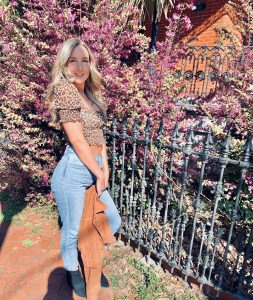February 7, 2022
- Interpret:
For this week’s reading, I got a bit carried away and ended up following through to the end of the third book. I’ve also read Mill on the Floss before, so when revisiting the novel, it all becomes kind of a big mesh for me on what I can recall of the text and what I now think coming back to it. Throughout the first three books of the Mill on the Floss, I found it most interesting in how articulated the relationships were as well as the differing perspectives held by each of the characters, which furthermore gave a multifaceted understanding to the motivations of the characters.
From the very beginning and throughout the first book an insight is provided into the childhood of Maggie and Tom, as well as a complex comprehension for their surrounding family and friends. In every instance it feels as if Maggie, the “little wench”, is set in juxtaposition to her brother, Tom, “…a physiognomy in which it seems impossible to discern anything but the generic character of boyhood; as different as possible from poor Maggie’s phiz….” as well as frequently being compared to that of the other characters, “It was like the contrast between a rough, dark, overgrown puppy and a white kitten” (Eliot 33, 63).
Through each of the characters’ descriptions, their behavior, their physical features, their intelligence and their overall demeanor are the two siblings constantly put at odds. However, Eliot provides an intricate portrayal of view in that we see what prompts each character to behave as they do. And in Maggie’s case, her rash behavior that causes distress to her family is more often than not out of passion, “but then the need of being loved, the strongest need in poor Maggie’s nature…” specifically in idolization of Tom and envy for his affections, “She would have given the world not to have eaten all her puff, and to have saved some of it for Tom,” and misunderstanding already characterized to the brazen featured girl and her intelligence” (37, 47). Tom, seemingly more exalted if not by Maggie’s own viewpoint, also faces his own hardships when the readers are brought away from Maggie’s focus of Tom and into his own at school during the duration of book two.
These past interactions and interpretations to the characters I think have a lot to say in regards to the various themes carrying on in the novel. Each new scenario and how they are perceived, especially in what is deemed appropriate or inappropriate by society and other figures of the family, is going to impact them on becoming adult figures entering society.
- Critically Evaluate:
In relation to the supplemental reading this week, Robyn Warhol’s “Toward a Theory of the Engaging Narrator,” gives readers a grander scheme of what is driving the narrative discourse and what is actively chose to be presented towards the readers/the author’s audience. As mentioned in part one of my response, interpreting the novel, a lot of devices are being employed to present and comprehend these complex characters as they go through life and deal with challenges. In analyzing these narrative structures and how Eliot chooses to align relationships with the characters and whether or not he (the author) directly engages or distances viewpoints of these, play a large role in how the characters and the themes of the text are being portrayed and understood by readers. It really makes me question as to whether we sympathize with a character because they are actually deserving of sympathy, or because that is how the author has presented the context/situation.
- Points of discussion for class:
“Under these average boyish physiognomies that she seems to turn off by the gross, she conceals some of her most rigid, inflexible purposes, some of her most unmodifiable characters; and the dark-eyed, demonstrative, rebellious girl may after all turn out to be a passive being compared with this pink-and-white bit of masculinity with the indeterminate features” (Chapter Five)
What are passages like this attempting to say in regards to typical feminine ideals or beauty standards and behaviors?
Also, could this novel also be considered a spiritual novel because of the significant impact of religion there is on Maggie?
Or at least in the way she seems to characterize ideals set up on women religiously? Rather than just seeing it as a feminist novel because of the ideals set and oppression put forth.

